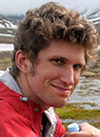July 12 - 16, 2026
Washington, D.C., United States
ISCB Flagship Event
Dec 10-13, 2025
Hong Kong, China
ISCB Official Event
December 6 - 8, 2025
Northeastern University, USA
Jan 3 - 7, 2026
Big Island, Hawai'i
April 21-22, 2026
Cambridge, UK
ISCB Official Event
May 26 - 29, 2026
Thessaloniki, Greece
May 27-29, 2026
Toronto, Ontario, Canada
ISCB Official Event
August 31 - September 4, 2026
Geneva, Switzerland
Bioinformatics Community Events
ISCB’s Annual Flagship Meeting
Support the society while achieving your marketing goals
Become a ISCB collaborative conference, learn more here
Regional, topical, worldwide - your platform to present science
dedicated to facilitating development for students and young researchers
The ISCB Affiliates program is designed to forge links between ISCB and regional non-profit membership groups, centers, institutes and networks that involve researchers from various institutions and/or organizations within a defined geographic region involved in the advancement of bioinformatics. Such groups have regular meetings either in person or online, and an organizing body in the form of a board of directors or steering committee. If you are interested in affiliating your regional membership group, center, institute or network with ISCB, please review these guidelines (.pdf) and send your exploratory questions to Diane E. Kovats, ISCB Chief Executive Officer (This email address is being protected from spambots. You need JavaScript enabled to view it.). For information about the Affilliates Committee click here.
Topically-focused collaborative communities
Connect with ISCB worldwide
Environmental Sustainability Effort
ISCB is committed to creating a safe, inclusive, and equal environment for everyone
Resource library for education and training materials
Search jobs, find talent
Science at the click of the mouse, recorded talks
High-quality research devoted to computer-assisted analysis of biological data
Latest research and publications
Certifying Quality in Computational Biology Education
Latest updates from ISCB
Highlighting Society events, programs, and achievements
Celebrating scientific achievement and innovation
Honoring our distinguished researchers
Recognizing contributions and achievements
Center for science, collaboration, and training
The International Society for Computational Biology (ISCB) in partnership with George Mason University, is hosting the second annual the Youth Bioinformatics Symposium (YBS), Exploring Computational Biology Winter 2019.
In 2016 nearly 100 students from the greater Washington DC area gathered for this event. This engaging one-day event introduces students to the amazing world of computational biology, allowing them to engage with and learn about popular tools used in research in our hands-on workshop, as well as inform them of the many career areas in whcih bioinformatics is now appearing. ISCB is seeking sponsorship for the 2019 YBS at any contributable amount. Supporters of the conference will be recognized during the event as well as in post event articles.
RECOMMENDED SPONSORSHIP LEVEL AND BENEFITS
| GOLD - $3000 |
| SILVER - $2000 |
| BRONZE - $1000 |
| ANY AMOUNT UP TO $999 |
The purpose of the mini science fair is to allow middle and high school students to think creatively, conduct background research, and develop a proposal for a unique solution that can help address important problems that face the public health and medical fields. Through this process, students will be able to think like scientists, apply technologies to pressing global health issues, and learn how to make existing technologies even better.
| Registration will reopen when a new date in the fall is determined. |
Theme of the Mini Science Fair:
The theme for this year’s youth symposium is Precision Health. This area is broad to allow students room to explore their own interests and see how computational and engineering methods can be applied to global health issues.
Examples of areas in Precision Health include:
Before the Symposium:
Students will be able to form teams to help brainstorm and think of ideas. A few weeks before the symposium, the team will submit a brief abstract of their proposal. The abstract submission will take place on the symposium website.
The Symposium organizer will have research scientists available to help guide the teams.
During the Symposium:
At the symposium, there will be a time when teams will give poster presentations to various visitors at the symposium (family and friends) and will also present their idea to judges. The judges will score and determine the top projects, who will receive an award at the closing ceremonies.
Presentation Details:
At the science fair, individuals or teams can present their project in a variety of ways. The different options include a trifold poster board, powerpoint presentation on a laptop, or even printed out images and notes as a supplement. Presenters are not required to have a trifold poster board, and can instead determine what presentation method is best for them. The symposium organizers will provide a table for each project at the science fair.
Judging Criteria:
--> Click here for a PDF of this rubric.
| RUBRIC FOR JUDGING PROJECTS IN YOUTH SCIENCE FAIR |
|||
| CRITERIA | Excellent (4-5 pts) | Competent (2-3 pts) | Needs work (0-1 pts) |
| Scientific question is identified | Question is explicitly stated. Hypothesis to address the question or technical solution is explicit. | Question and/or hypothesis is implicit | Unclear what is the scientific questions and no statement of hypothesis |
| Significance of problem explained | Explains the problem being addressed, including the prevelance or cost to society or the environment. Discussion of other solutions, including deficiency of those solutions | Briefly mentions the problem, with some discussion of impact to society. Mention of other solutions | No mention of prior attempts to solve the problem; no understanding of significance of the problem |
| Methods used by students to understand problem and frame the question | Student explains how they did their research, e.g. reading the literature, online databases, other onlines sources; discussions with scientists. References included on presentation |
Research methods are implicit or references are not included on presentation | Research methods are unclear and no references are provided |
| Methods to perform proposed research, test hypothesis, or create new technology States whether designing computer algorithm, proposing clinical trials, or biological experiments. | Includes appropriate control experiments or control computer simulations; OR, Has good plan of technology development and alternatives. |
Proposed methods are not stated explicitly. Understands about need for control experiments or simulations but not included in plan; OR, technology plan has no contingencies. | No understanding about control experiments or simulations. Experiments or technology development are poorly designed |
| Presentation | Uses good visual aids. Shows deep understanding of the problem domain. Provides good summary of all the information instead of focusing on details. |
Some visual aids, but overall too much text. Spends too much time on details instead of focussing on big picture. | No or inappropriate visual aids. Reads from written report. Unable to answer questions about project. |
| Student/Team: | Judge: | ||
Our live panel discussion will talk about the paths of our panel members, students and professionals, in Bioinformatics and Computational Biology. Prepare to hear offered opinions and responses to questions about university and career choices.
--> Submit your own question here. <--
| MODERATOR | |
 |
Lauren Quattrochi, , MA, MA, PhD |
| PANELISTS | |
 |
Keylie Gibson |
 |
V. Keith Hughitt |
 |
Eldred A. Ribeiro, Ph. D |
 |
Dr. Amarda Shehu |
 |
Nick Weber |
The workshop will introduce the central nervous system encompassing the brain and spinal cord and the function of the brain. The three parts of the brain, cerebrum, cerebellum and brain stem will be explained. The division of brain into two cerebral hemispheres with four lobes encompassing the hemispheres, occipital, temporal, parietal and frontal lobes and each lobe’s function will be introduced. Brain cells or Neurons, their important parts such as the axon, dendrites will be introduced along with their function and biological neural networks. A hands on activity of building a physical model of the brain and the neuron will be conducted. Scientific software, Sci-kit will be utilized to model action potentials of the neuron. Topics will also cover Neurodegenerative diseases and tumors of the brain and how medical imaging is helping in diagnosis and treatment of these.
The workshop will focus on various problems in bioinformatics and computational biology which can be solved using artificial intelligence and machine learning models. An overview of several such problems will be presented and one of them will be used as a practical example. The students will learn the basics of creating a training set to build the model and a test set to validate the model. Weka, an open source machine learning program, will be used to generate predictive models using different machine learning algorithms and analyze the models' performance.
Biomedical research primarily focuses on the biology of human health and disease and ranges from human biology to more specialized areas such as human genomics, human genetics, human physiology, and human nutrition. We will begin the journey with an experimental expressed sequence tag (EST) obtained from a patient. EST is a short sub-sequence of a cDNA sequence. In general, ESTs may be used to identify gene transcripts, and are instrumental in gene discovery and determination. We continue to identify candidate genes expressing them, and to determine matching exon-intron structures. We will then identify a disease gene contributing to the disease phenotype using the human genome browser.
The workshop will analyze DNA sequence data to identify the gene(s) involved and identify the context of the samples by linking to PubMed records. You will analyze DNA sequence data using local alignment, global alignment, multiple sequence alignment tools and then use your multiple sequence alignment to estimation evolutionary (phylogenetic) relationships amongst the sequences. With the phylogeny in hand, you will then solve the forensic mystery and decide if the accused is innocent or guilty of an alleged crime. You will gain experience using a diversity of open-access tools that are all available online.
| Saturday, January 12, 2019 | |||
Start |
End |
Event |
Location |
| 09:00 AM | 10:00 AM | Registration | Innovation Hall Lower Lobby |
| 10:00 AM | 10:50 AM | Keynote Dr. David Fenstermacher Vice President R&D-Bioinformatics Medimmune, LLC. |
Innovation Hall Room 105 |
| 11:00 AM | 12:00 PM | Workshops Session A |
Innovation Hall Rooms 222, 223, 326, 327 |
| 12:00 PM | 01:00 PM | Lunch | Innovation Hall Lower Lobby |
| 01:00 PM | 02:00 PM | Workshops Session B |
Innovation Hall Rooms 222, 223, 326, 327 |
| 02:00 PM | 02:15 PM | Transition break | |
| 02:15 PM | 03:15 PM | Workshops Session C |
Innovation Hall Rooms 222, 223, 326, 327 |
| 03:15 pm | 04:45 pm | Panel Discussion | Innovation Hall Room 105 |
| 04:45 pm | 05:00 pm | Closing Ceremony | Innovation Hall Room 105 |
*Children under 18 MUST be accompanied by their parent (parents also need to register individually for a ticket).
ISCB Members enjoy discounts on conference registration (up to $150), journal subscriptions, book (25% off), and job center postings (free).
Connecting, Collaborating, Training, the Lifeblood of Science. ISCB, the professional society for computational biology!
Giving never felt so good! Considering donating today.